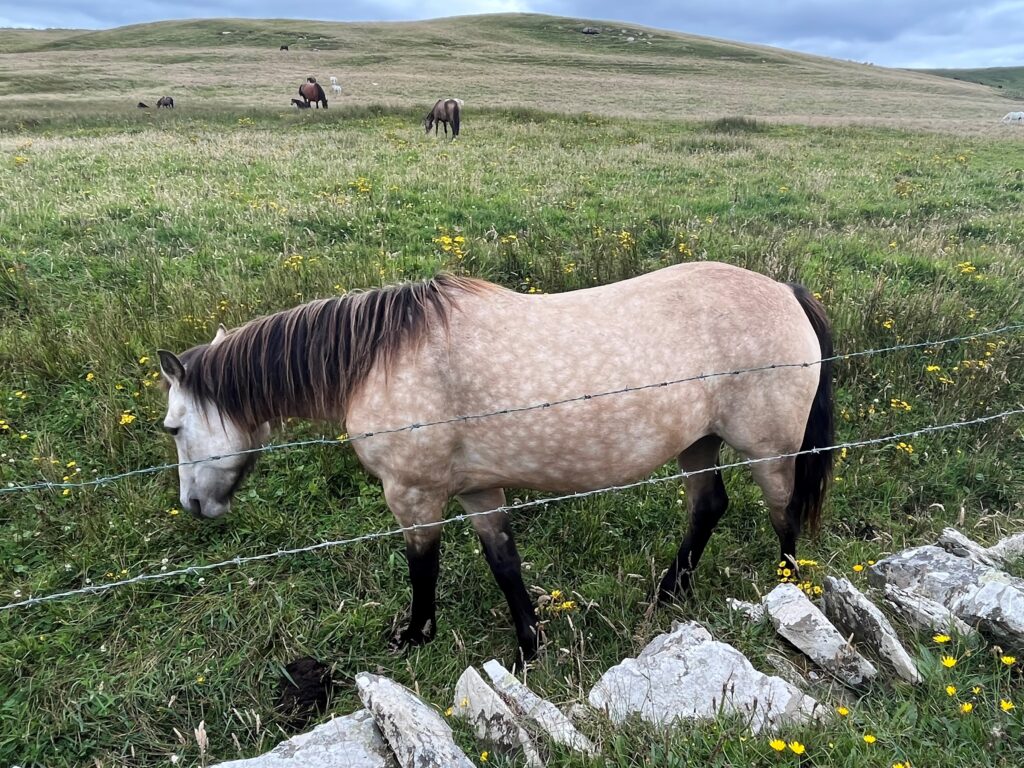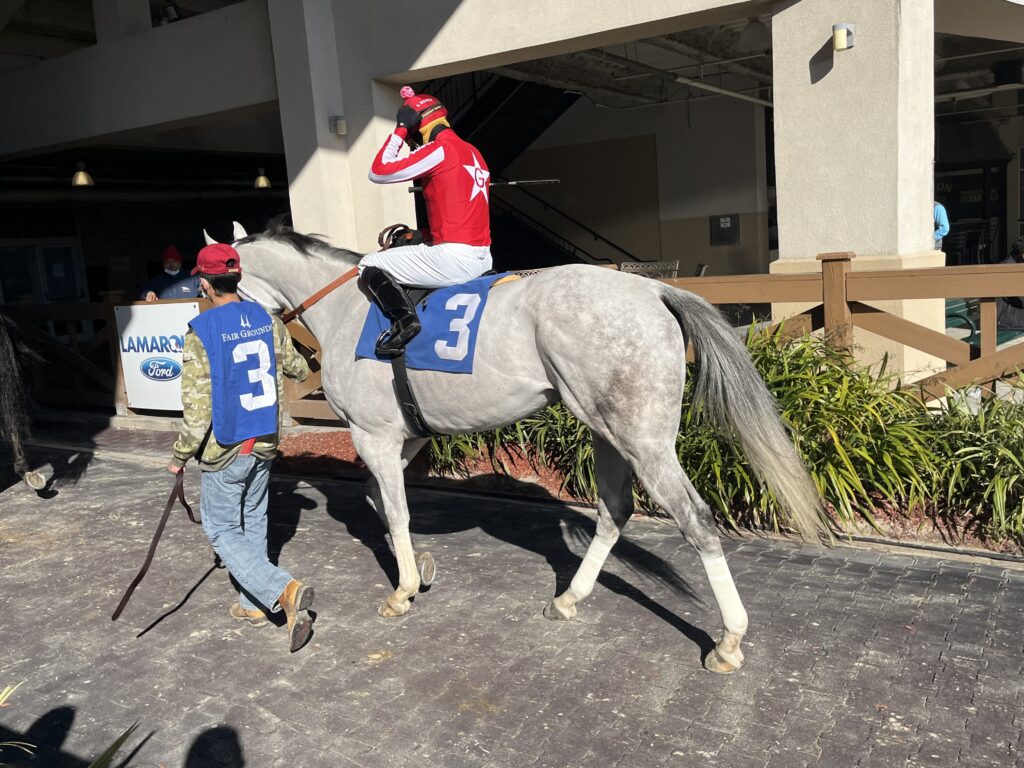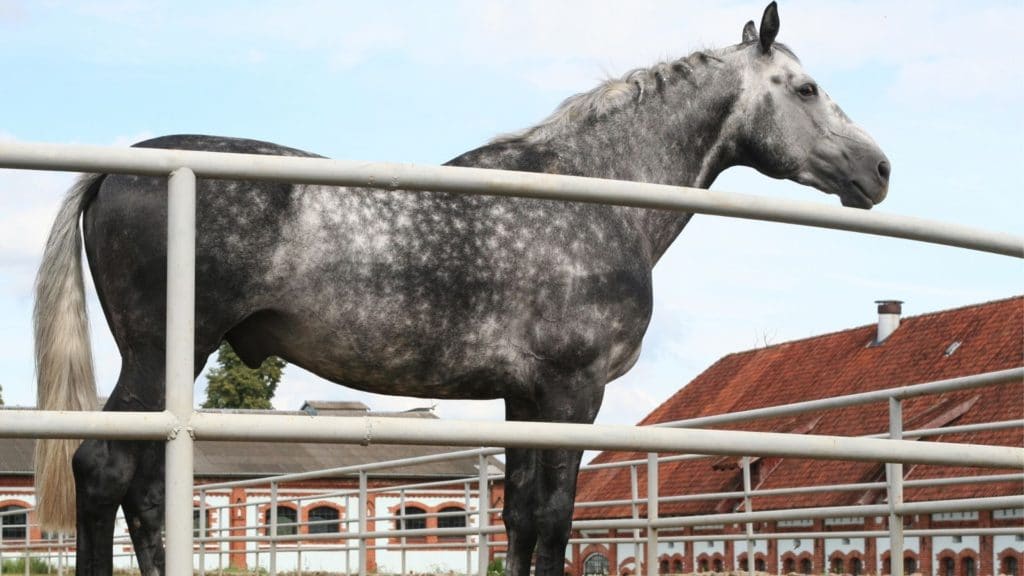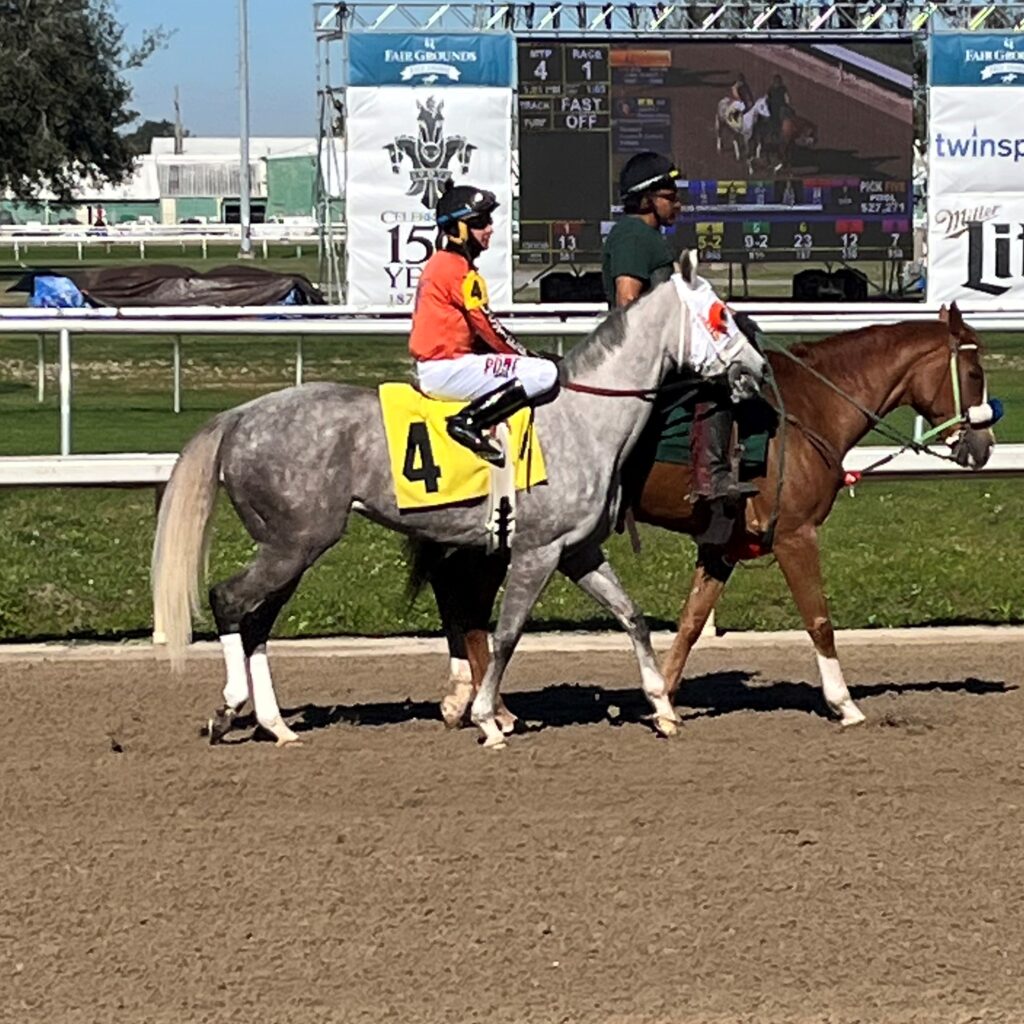Last updated: December 6, 2022
Some of our horse’s coats develop beautiful dapples while others never change. They eat a similar diet, so what other factors could influence their coats to change color and dapple?
A combination of factors works together to make dapples on a horse’s coat: Feeding proper nutrients, keeping your horse fit, brushing out your horse coat regularly, and the genes that control hair pigmentation all play a significant role in dapples’ development.
Dapples in a horse’s coat are the epitome of equine health and proper dieting. However, there is more to making your horse’s coat dapple than meets the eye.

Follow these steps to make dapples in horses’ coats.
If the genes are aligned, most well-conditioned horses show dapples when fed a nutrient-rich diet. Giving the coat an added boost requires regular grooming and a good parasite prevention program.
1) Feed proper nutrients
Most horse owners believe that if you feed your horse a diet full of fat and protein, the animal will dapple. That’s not necessarily true because not all fat and protein are the same.
Protein
Horses need to derive their nutrients from a high-quality forage source like alfalfa. Alfalfa is high protein hay that is low in carbohydrates and sugar. Consumption of large quantities of protein won’t hurt most horses because they secrete the amounts their bodies don’t use.
However, it does cause the animal to drink and urinate more. The key is to feed a balanced diet and ensure your horse eats plenty of hay to keep its digestive tract working efficiently.
Amino acids, fats, minerals, and vitamins.
Besides protein, to get the dapples in your horse’s coat, it also needs amino acids, fat, Vitamin A, and trace minerals. We typically add a supplement to our horse’s feed that contains flaxseed oil and omega-3 fatty acids. Flaxseed provides essential amino acids, which are necessary for horses’ skin and coat health.
These vitamins and minerals promote hair and hoof health. You can find supplements at most local feed stores or online that provide most. Amazon has a decent selection; you can check it out here. I don’t recommend one over the other; we switch up; my primary consideration is the ingredients.
Fat and essential trace minerals such as copper and zinc also boost the horse’s coat’s quality. Commercial feeds are fortified with these minerals. But to ensure your horse is getting the correct amount of copper and zinc, get with your veterinarian or feed specialist and customize a feeding program.
Giving your horse a scoop of good commercial feed daily and allowing access to high-quality forage should provide all your horse needs to grow a healthy coat and be on its way to dappling. But more than a good diet is necessary.

2) Peak conditioning
Conditioning and dapples seem to go hand in hand. Horses with the genome necessary to dapple will show them when fit. But without the right genes, even the healthiest horse won’t dapple.
The horse in the photo above is a two-year-old Thoroughbred filly in training, notice the dapples on her head and neck. If you’re working with a horse you know is out of shape, start its conditioning slowly.
Start by riding thirty minutes in an arena or going for short trail rides three or four times a week. Keep this up for a least a month or until you feel your horse’s fitness level is increasing.
When your horse is ready, start riding for an hour a day and trot for 10-15 minutes. Continue to increase the intensity of your rides gradually. Ideally, you want to gallop for five minutes and walk for three minutes two times during your hour-long riding session.
Getting a horse is not easy work, but the key is to be patient; some horses take up to six months before they are in prime shape. Remember, animals are individuals, and some will advance faster than others.
A helpful tool to use to determine if your horse is at a healthy weight is the Henneke equine body condition scoring system (BCS). This system assigns a score based on the amount of a horse’s body fat at various locations.
I wrote an article about horse obesity and discussed the BCS. You can read more about it here.

3) Proper grooming
Daily grooming will help your horse dapple and is essential for the overall health of its coat. Brushing your horse increases blood flow to the skin and stimulates surface glands that release the skin’s natural oils.
Once the oils are released, brushing spreads it throughout the animal’s coat. These oils keep the hair and skin soft and moisturized, plus they reduce the risk of skin diseases such as rain rot.
Grooming several times a week not only helps a horse develop dapples. It has other benefits. It gives you a chance to bond with your animal, check it for injuries, and warm its muscles before riding. Brushing your horse also provides you with some exercise.
If you want some more information on brushing horses, I wrote a comprehensive article you may want to check out: Why Do You Need to Brush a Horse Before and After Riding?
4) The right genes
For a horse to get dapples in its coat, it must have the right genes. The Z locus variant is the silver gene, and it decreases the storage of eumelanin and reduces the amount of black on the animal’s hair shaft.
Horses’ hair shafts exhibit a range of shades based on the production of black and red pigments. The amount of red and black on each hair in a horse’s coat produces variations of black, red, yellow, gray, or white hair fibers.
The effect of the gene produces dapples, but what is interesting is that the silver mutation is most visible on the end of the hair shaft and long hair. Because the gene typically changes the ends of the strands, it can be clipped off.
Click this link to read an interesting and in-depth study on the subject written by genetic researchers.

5) Parasite control
Internal and external parasites can hinder the production of dapples on your horse’s coat. Internal worms cause significant harm to your horse’s overall health, as do external parasites.
Internal worms
They can weaken your horse’s immune system and deprive it of needed nutrients. The weakened animal coat often becomes dull and may begin to thin.
Some common signs to watch for are weight loss, weakness, loss of appetite, diarrhea, colic, and a dull coat. If you suspect your horse has worms contact your veterinarian and create a parasite control schedule.
External parasites
Mites, bots, horseflies, and many other flying parasites transmit disease and wreak havoc on a horse’s coat. These pests can destroy a horse’s hair and cause an animal to rub itself bald to relieve the itching.
Some insects are so small that you never notice them until the damage is visible. Often they create large patches of crusty skin and hair loss. To prevent external parasites, store trash and manure far from your barn, limit moisture, use fly sprays, and brush your horse regularly.
If you keep horses in a barn, use fans and make sure the stalls are well ventilated and kept clean. Fans will help keep most flying pests from lighting on your animal.
What does a dappled horse look like?
Dapples are rings in a horse’s coat that circle lighter-colored hairs. They typically exhibit on a horse’s hindquarters, underbelly, neck, and shoulders. Some horses have permanent dapples, and others display during periods of exceptional fitness and a balanced diet.

Dapple Grey

Silver dapple Morgan
Below is a YouTube video about dapples on horses.
Related articles:
- What is a Blue Roan Horse? Breeds, Names, Colors, & Pictures
- Are Chestnut Horses and Sorrel Horses the Same Color?
- Registered Thoroughbred Horses: What Colors Are Permitted?
- 12 Horse Coat Colors: Patterns, Genetics, Markings, Pictures
- Colors of a Classic Roan Horse
- All About Dun Horses: Colors, Markings and More
- Buckskin Horses: Facts, Colors, Origin, and Characteristics
- Palomino Horses: Facts, Characteristics, and Unique Colors
- What Is A Bay Horse? The Facts Behind the Coat Color
- What Is A Sorrel Horse? Is Sorrel Just Another Word For Red?

About the Author: Miles Henry
Lifelong Horseman | Racehorse Owner | Published Author
Miles Henry brings over 25 years of hands-on experience training and owning Thoroughbred racehorses. Raised with Quarter Horses and Appaloosas, he’s spent a lifetime learning from horses—on the track, in the barn, and in the field. Today, he runs a small but successful racing stable in Louisiana and shares real-world insights on HorseRacingSense.com, helping horse owners, fans, and bettors navigate the sport with confidence.
📚 Books: View Miles’s books on Amazon »
🎧 Podcast Guest: Animal Tales Ep. 32 |
YouTube Interview
📩 Newsletter: Sign up for racing tips and horse care advice »
🔗 Follow Miles:
Twitter |
Facebook |
YouTube


